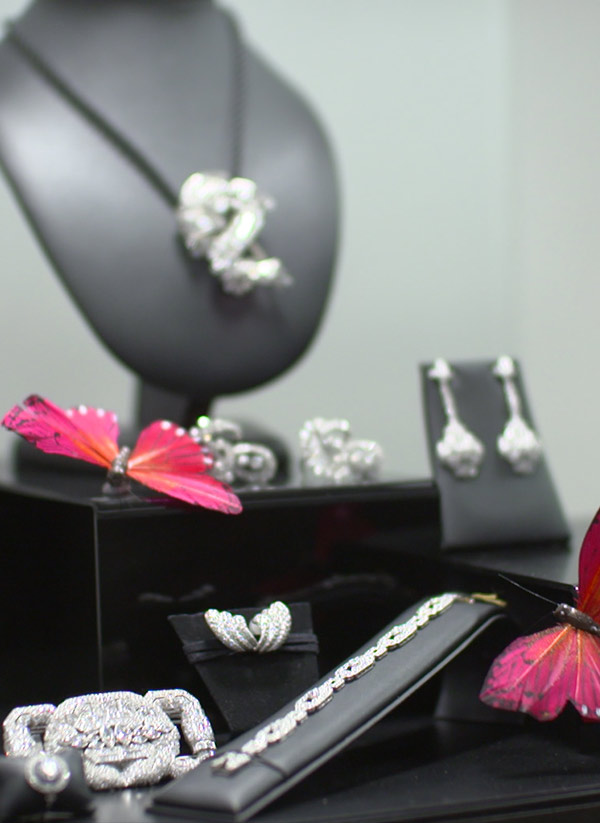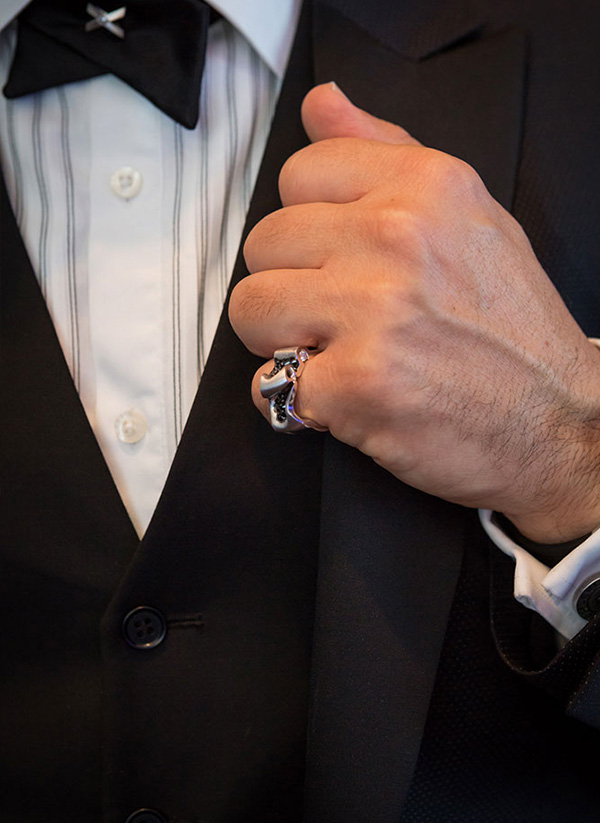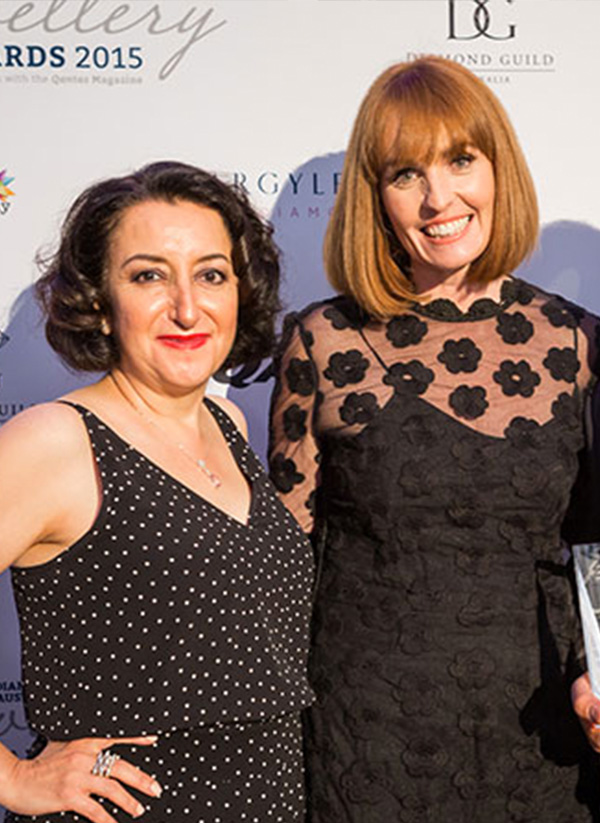08-Oct-2014
Coloured diamonds are a rare breed, so where do they come from?

When a large blue diamond is sold at auction, it makes news. The same is true when a mine unearths a significant blue, or as Petra’s Chief Executive Officer (CEO) Johan Dippenaar describes it, “a blue of consequence.” These stones are so rare, each one is greeted like a much-anticipated newborn: coddled, cosseted and photographed, its arrival announced to the world. The subsequent sale price makes headlines as well.
La Serlas
Blues of consequence are among the rarest of the rare among fancy color diamonds. Since the Cullinan mine in South Africa was acquired by Petra from De Beers in 2008, it has produced six important blue diamonds. The most recent was the stunning 122.52-carat blue, recovered in June 2014, that sold this September for $27.6 million, or $225,269 per carat. In February 2014, a stunning blue of incredible intensity, weighing 29.6 carats, also from the Cullinan mine, was sold to Cora International for $25,555,555, or $862,780 per carat — and that’s for a piece of rough. It remains to be seen if the amount of the investment will be justified by the price tag on the ultimate gem it yields.
In the six years that Petra has worked the Cullinan mine, it has treated somewhere between 16 million and 18 million tons of ore, as well as another 10 million to 12 million tons of tailings. While all that material produced 6 million carats of white diamonds, it turned up just a half dozen blues. Miners don’t mine for blues; they just count themselves quite fortunate that one turns up every so often.
Petra is not the only player in the blue field of dreams. Canadian mining company Lucara Diamond Corp. found a singular 9.46-carat blue at its Karowe mine in Botswana. The rough was sold in July 2014 for $4,515,000, or $477,272 per carat.
In the Pink
When it comes to pink diamonds, there is a reliable producer and a dominant one but the diamonds are relatively small. Rio Tinto’s Argyle mine in Western Australia yields 20 million carats of diamonds in an array of brownish tones. Occasionally, a pink diamond is discovered. Josephine Johnson, manager of Argyle Pink Diamonds, says, “Less than one-tenth of 1 percent of Argyle’s production is pinks, accounting for 90 percent of the world’s supply.”
The prized pinnacle of Argyle’s production are the rare stones sold at the company’s annual Pink Diamond Tender. These intense, often purplish pink or purplish red diamonds are the glittering prizes that stand out from the mine’s more mundane production.
Argyle’s run-of-the-mine production comprises many shades of browns. Bruno Sane, Rio Tinto’s general manager of marketing, says, “Brown diamonds comprise around 70 percent of the volume of the Argyle mine.” These are the “Champagne” colors that allow the average jewelry buyer to own a piece of the colored rock.
With the shift from open pit to underground mining scheduled to be complete at Argyle by 2015, this production volume is expected to continue until “at least 2020,” according to Robyn Ellison, Rio Tinto spokesperson. She adds, “The color, size and quality distribution of Argyle diamonds does not change as the mine goes deeper.”
In the coming years, Rio Tinto will assess the economics of continuing to mine for these small, various-colored diamonds. Having single-handedly made a market for the gems, Rio Tinto virtually invented — and branded — a new jewelry category for diamonds in colors that were not even used previously. It would be difficult to assess the impact the loss of these diamonds would have on the jewelry market. For example, the firm’s grayish production, dubbed “Silvermist,” is sold across the United States at Sam’s Club stores. Not since De Beers invented the diamond engagement ring market had another miner found a way to create a category for its production.
Historically, the Williamson mine in Tanzania was known for “bubblegum” pinks but, according to Dippenaar, who says he purchased that mine two years ago, “We’ve treated 7 million tons of ore and haven’t had a pink of consequence” in all that time. Petra’s Koffiefontein mine, which the firm bought from De Beers in 2007, has produced a 6-carat pink. Pinks are found sporadically in mines across the globe, including light pink from Brazil, as well as green stones with a somewhat oily appearance. The occasional purple diamond surfaces in Siberia.
Sunny Yellow
Beyond the multitude of Argyle’s various shades of brown diamonds, yellow diamonds comprise the largest group of fancy colors available. According to Kimberley Diamonds Ltd. (KDL), which purchased the Ellendale diamond mine in Western Australia from Gem Diamonds in 2013, the mine supplies around 50 percent of the world’s fancy yellow diamonds, currently producing about 120,000 carats per year. According to Carson Glover, Tiffany & Co. spokesman, since 2009, Tiffany has had exclusive rights to all fancy yellow rough diamonds from the Ellendale mine and will continue to do so “for the full life of the mine.”
At the same time, KDL announced a special offering of approximately 750 carats of high-quality fancy yellow diamonds, as well as approximately 26,500 carats of commercial production, all from the Ellendale mine. The stones were offered through online rough trading platform eDiamond Belgium in a sale that will conclude in October 2014. Since Petra acquired Kimberley Underground operations in 2010, including the Dutoitspan pipe, it has recovered three high-quality fancy yellow diamonds, ranging from 8 carats to 27 carats in size. Petra spokesperson Cathy Malins says, “We think there is good potential to increase recoveries if we have a higher proportion of our tonnages coming from Dutoitspan.”
The Australian firm of KDL is not related to the Kimberley diamond mine of South Africa, now owned by Petra Diamonds. The South African Kimberley mine is known for producing spectacularly large yellow diamonds, but not in the quantities coming from Ellendale. The Zimmi mining area in Sierra Leone occasionally produces vivid canary yellow diamonds from its alluvial fields and is also known to produce olive green diamonds. The Ekati mine in Canada sometimes yields pale yellow stones.
Estate Treasures
Some of the most important fancy colored stones sold at auction come from the depths of bank vaults. Estate jewelry is a small but prestigious source of extremely fine fancy color diamonds, according to Gary Schuler, director of Sotheby’s New York jewelry department. “Yes,” he says, “people are coming in with things from their vaults. Those are our most desired sources. They’re fresh to the market, attractive, with interesting cutting.” The supply is small, however, he adds, because “There were not very many people 40 to 50 years ago who were acquiring colored diamonds. It took a real connoisseur to appreciate those diamonds. It is not a regular occurrence but some of the greatest colored diamonds have come to us this way.”
When they do, Schuler explains, they are often truly impressive because “In the old times, colored diamonds were cut the same as white diamonds.” The round brilliant cut is ideal for a white or colorless diamond; it enhances the lack of color by increasing reflection. Fancy color diamonds, on the other hand, are rarely fashioned into round brilliants. That’s because, Schuler says, they are shaped by cutters “to draw color to the middle of the stone, to brighten it up.” When a round fancy color diamond comes to market, he says, “You are seeing material with rich saturation. Only the best material was cut and used in jewelry.” During that era, dealers and jewelers simply did not use material that was not fully saturated.
A dazzling example of a treasure from a vault is a vivid blue pear shape, shown on opposite page, from the estate of Mrs. Paul Mellon that is slated to come to auction at Sotheby’s New York on November 20, 2014. Schuler says the stone “was cut around the 1950s or 1960s; there was no record of it in the family. It’s a 9.75-carat VVS2 potentially flawless fancy vivid blue. What is so alluring is that it is cut like a white diamond with saturation of color and beauty.” The blue was originally matched with a 9-carat fancy blue, the pair set as ear pendants, but the vivid blue is being offered on its own.
In addition to the high flyers, auctions offer stones at the lowest end of the Gemological Institute of America (GIA) D to Z color grading scale, diamonds that are graded X, Y or Z. These are of interest to diamantaires who see the potential for recutting, bringing out more of the yellow, turning them into fancy light yellow diamonds.
The future of fancy color diamonds rests almost entirely in the hands of Rio Tinto. No firm decision has been made about continuing beyond 2020 its underground operation at Argyle, the world’s largest supplier of colored diamonds. But whenever this mine closes, it will be a game changer for the colored diamond category. At that point, barring any other source being discovered, fancy color diamonds likely will revert to the rarities they always were: singular, unique stones produced on rare occasions by mines around the globe.
Article from the Rapaport Magazine - October 2014. Author: Ettagale Blauer














